Bluebells in Cumbria
[updated 19 April 2021]
⇠ back to “Look out for…”
In most parts of Cumbria, the ‘usual’ bluebell along roadsides will often not be the native bluebell, Hyacinthoides non-scripta, but the hybrid H. x massartiana, derived from cultivation by escape or dumping of garden waste. We are still very much in need of strong records of the hybrid – please try to spend time in spring looking at your local bluebells – looking at them and trying to work out just what you have!
The map below (prior to the 2016 season) shows the existing records for this hybrid in the BSBI database at tetrad level or better. (Many records have been input at hectad level (i.e. 10 km square), not shown here.)
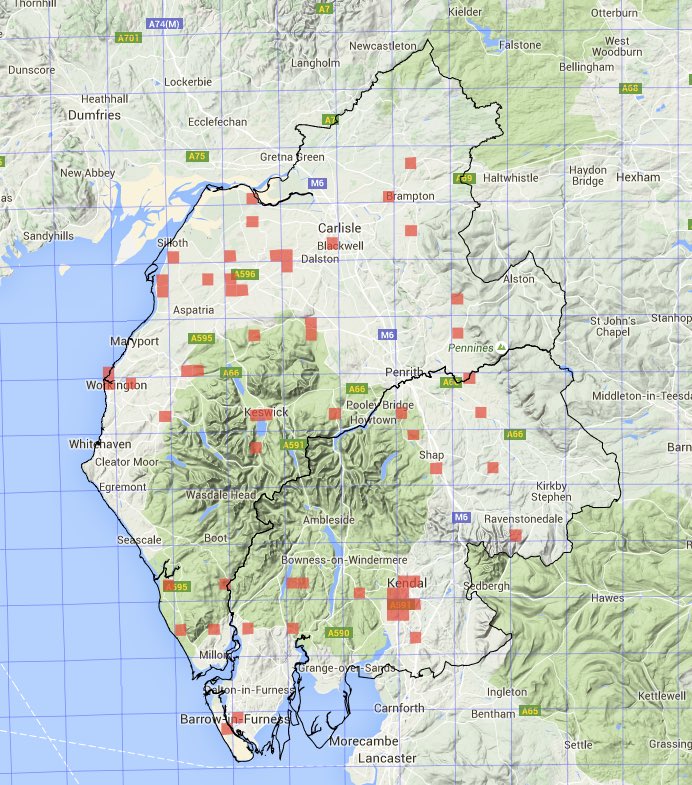
The most recent map, below (post the 2019 season), shows how much progress we have made in four seasons!

Native bluebells will occur on road- and lane-sides where they have ‘leaked out’ of ‘bluebell woods’, and perhaps in hedgebanks where these are of long-standing. The closer to habitation, and the younger the soils and more disturbed the situation, the more likely the bluebells are to be hybrid. If the two grow in proximity, then back-crossing is possible, since Stace says the hybrid “is intermediate in all characters and fertile, forming a complete spectrum between the parents and often naturalised in the absence of both”.
Bluebell Hyacinthoides non-scripta
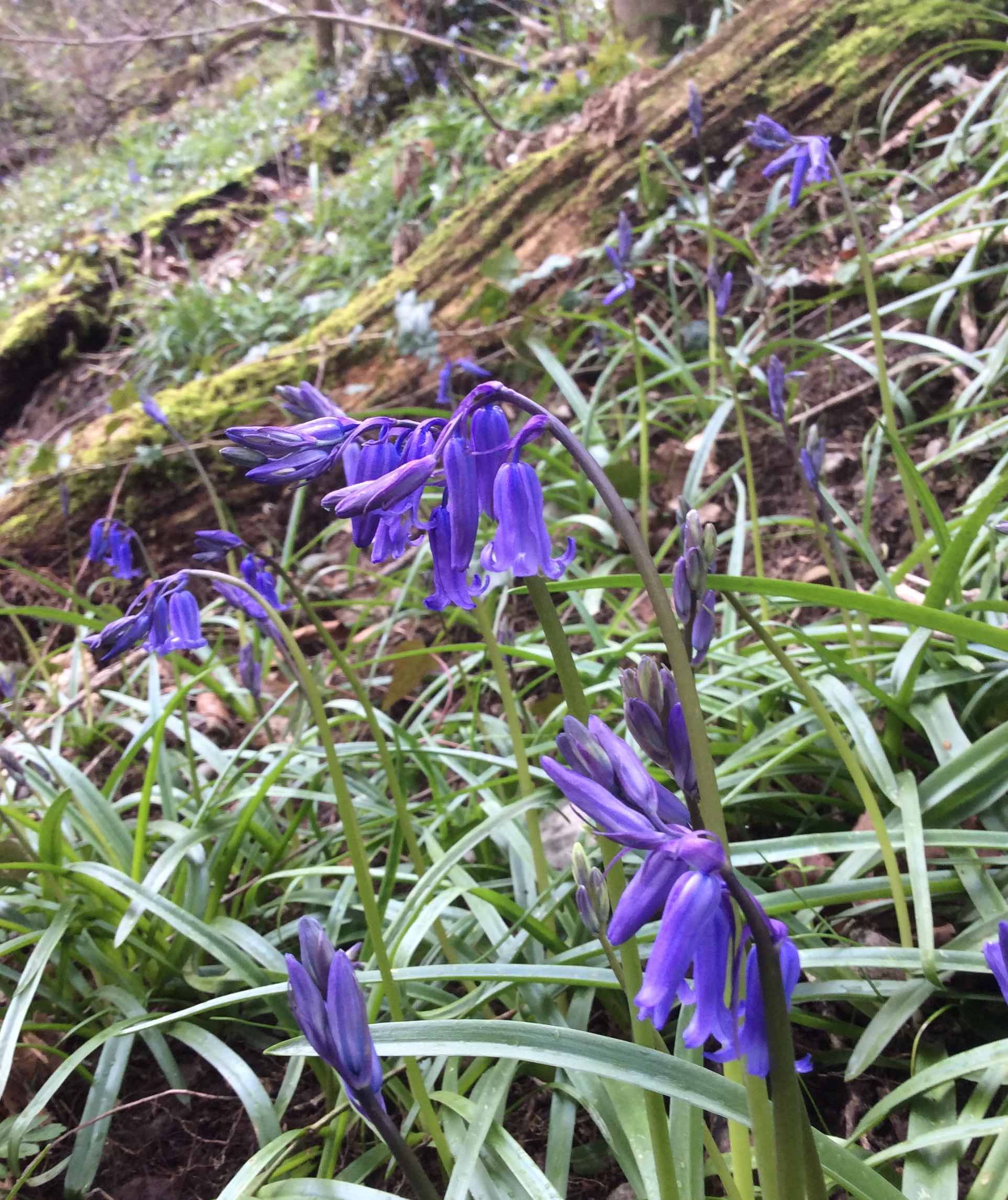
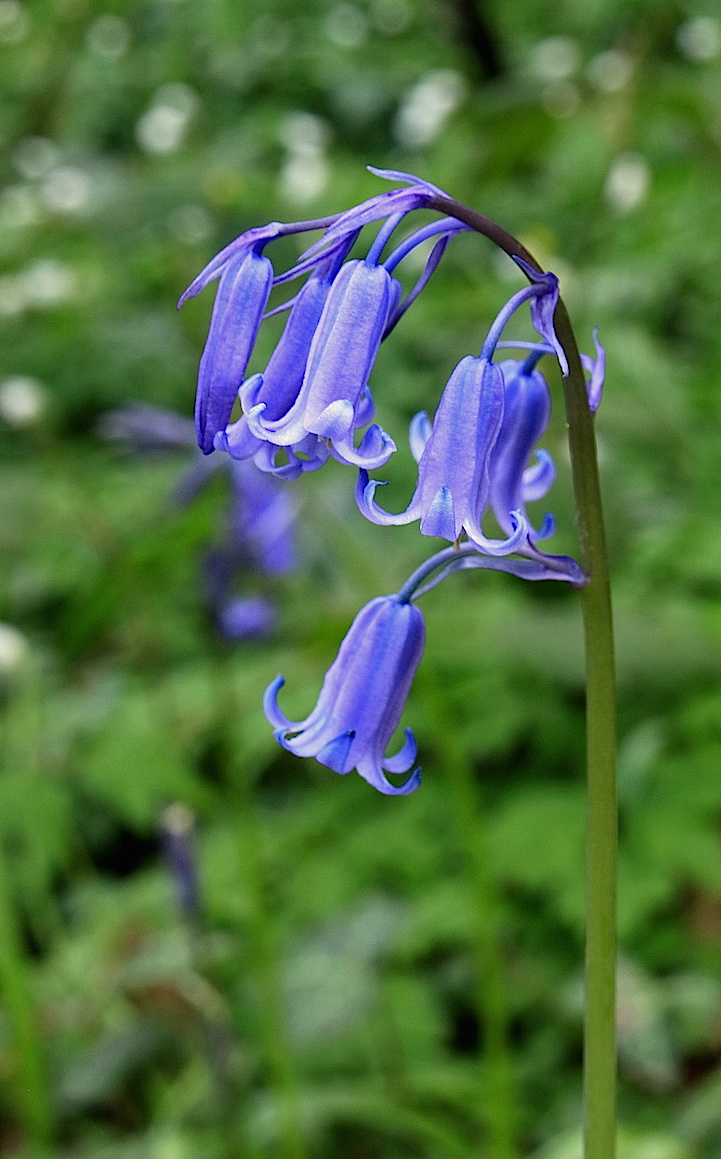
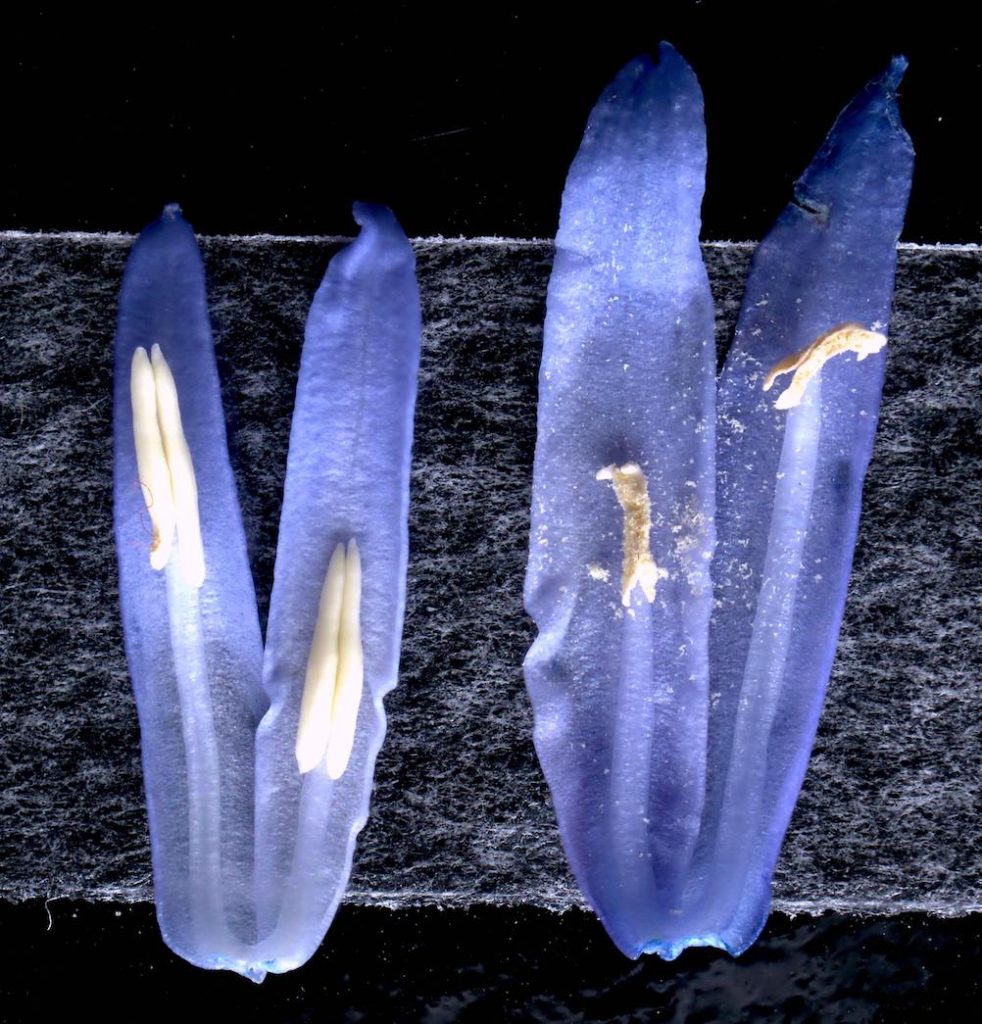
In the native Bluebell,
- the stem curves towards the apex
- inflorescence one-sided
- the flower-stalks curve to make the flowers droop, or ‘dangle’, at maturity
- the flowers remain closed, ‘tubular’, and +/- straight-sided
- the tepal*-tips become strongly recurved
- anthers and pollen are cream-coloured
- leaves are narrow (Plant Crib = 7–15mm) [Tepals = the flower-parts in families where petals and sepals are not clearly differentiated]
Hybrid Bluebell Hyacinthoides × massartiana
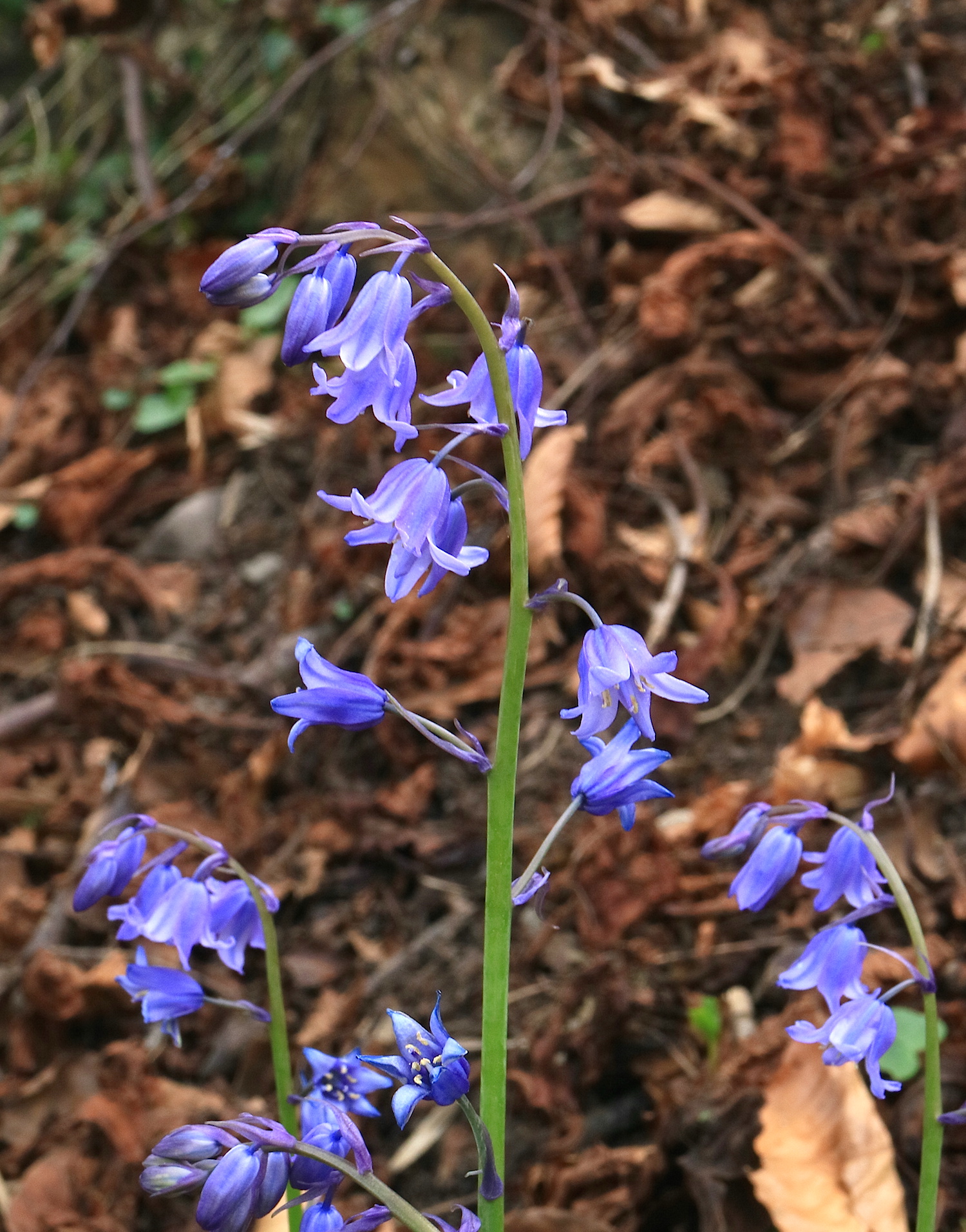
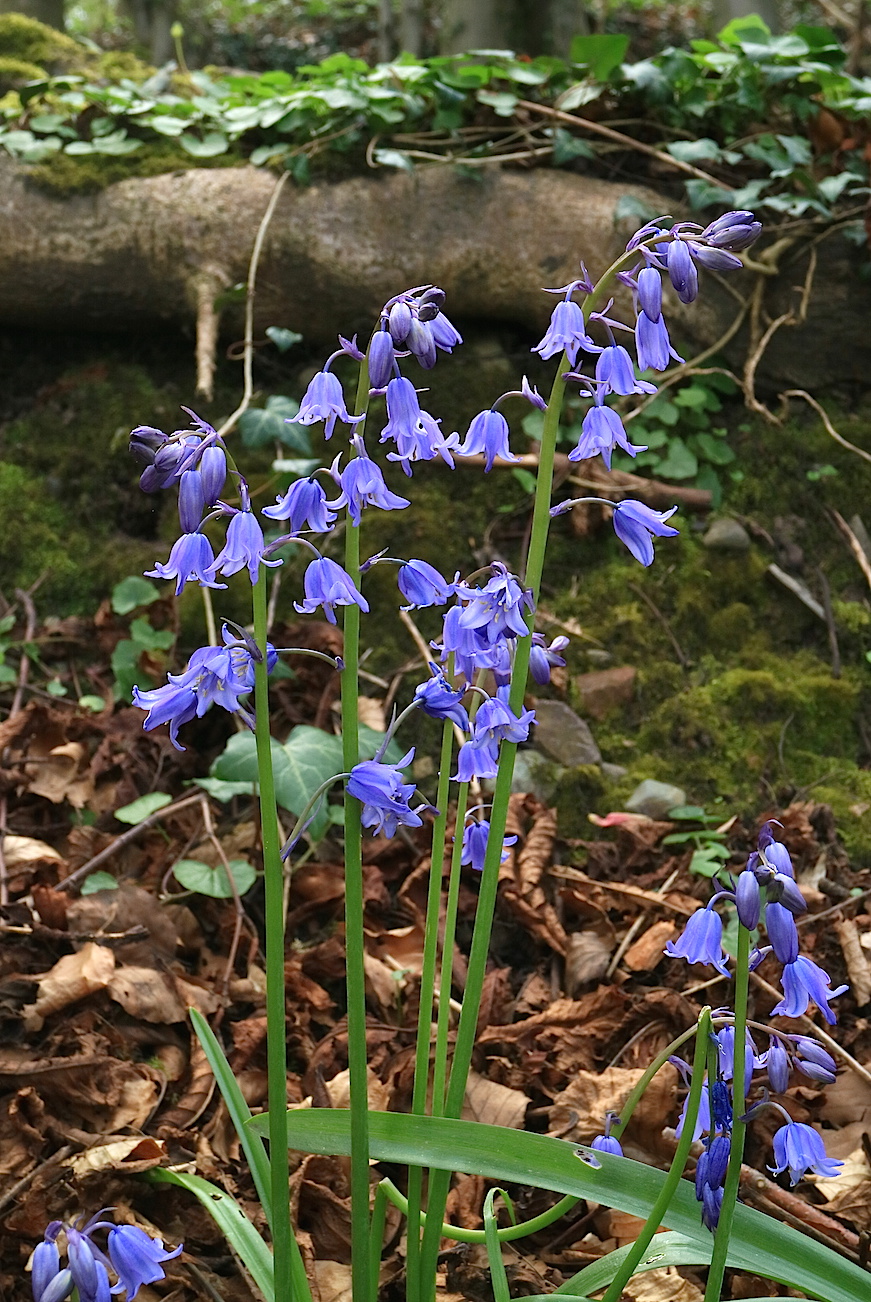
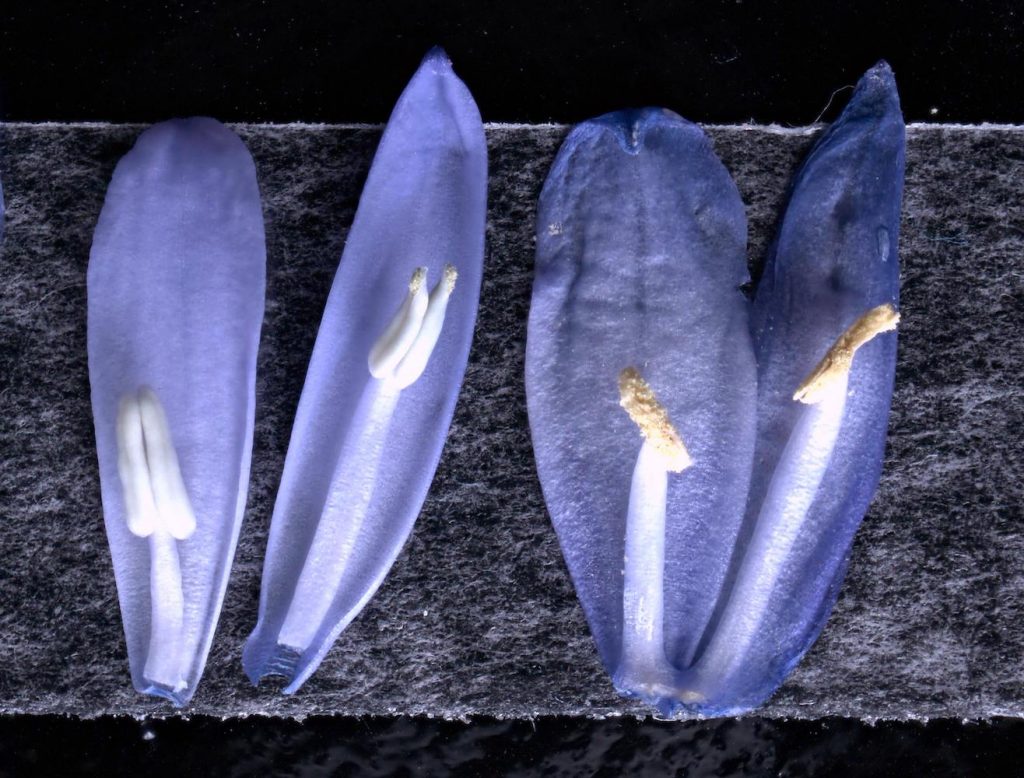
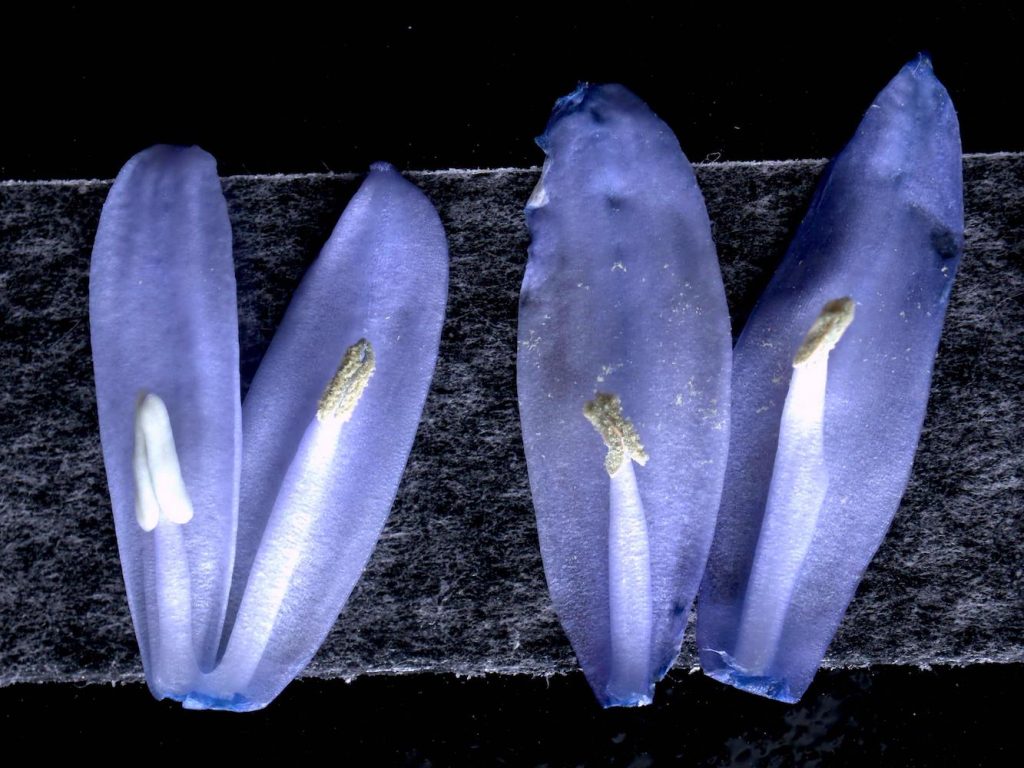
In the hybrid Bluebell,
- the stem remains erect
- flowers arise around stem
- mature flowers droop variably, but do not ‘dangle’ vertically
- the flowers if ‘tubular’ are wider than the above, but often are more open
- the tepal-tips become less strongly recurved
- pollen is variable in colour; anthers start off mostly a pale greyish or blueish, but become ‘pollen-coloured’ later, after pollen released, and may look very pale
- leaves are may be wider (Plant Crib = 10–30mm)
… but see the comments below about variability in the hybrid!
Spanish Bluebell Hyacinthoides hispanica
Can you find anything approaching the other parent, true Spanish Bluebell, H. hispanica? Note that A Flora of Cumbria admitted no examples referable to this in the survey period, as all ten samples submitted as this for an ‘expert opinion’ were determined as hybrid!
There are increasing doubts that any plants established ‘in the wild’ in UK can be referred to pure Spanish Bluebell. Genetically pure Spanish may well be rare in cultivation, and perhaps only in specialist collections. Certainly plants advertised for sale as ‘Spanish’ from popular suppliers never seem to be that, to judge at least by the accompanying photos! The usual bluebells in our gardens are hybrids of various types, and it is these which establish out of gardens. Any populations of escaped true Spanish Bluebells would likely be prone to replacement over time by hybrids from the vastly more abundant pollen available from native Bluebells.
It may be that – for the moment – it is safer the say that some plants, such as the ones described below, belong at the ‘Spanish-end’ of the spectrum of hybrids, and these best-marked examples (such as the garden plant below) are strikingly different from the native Bluebell, and can be separated from most hybrids easily enough. Look how the flowers gape, and are angled upwards, and the petals are wide, and almost flat, with hardly any outward curve, even when the flower is mature.
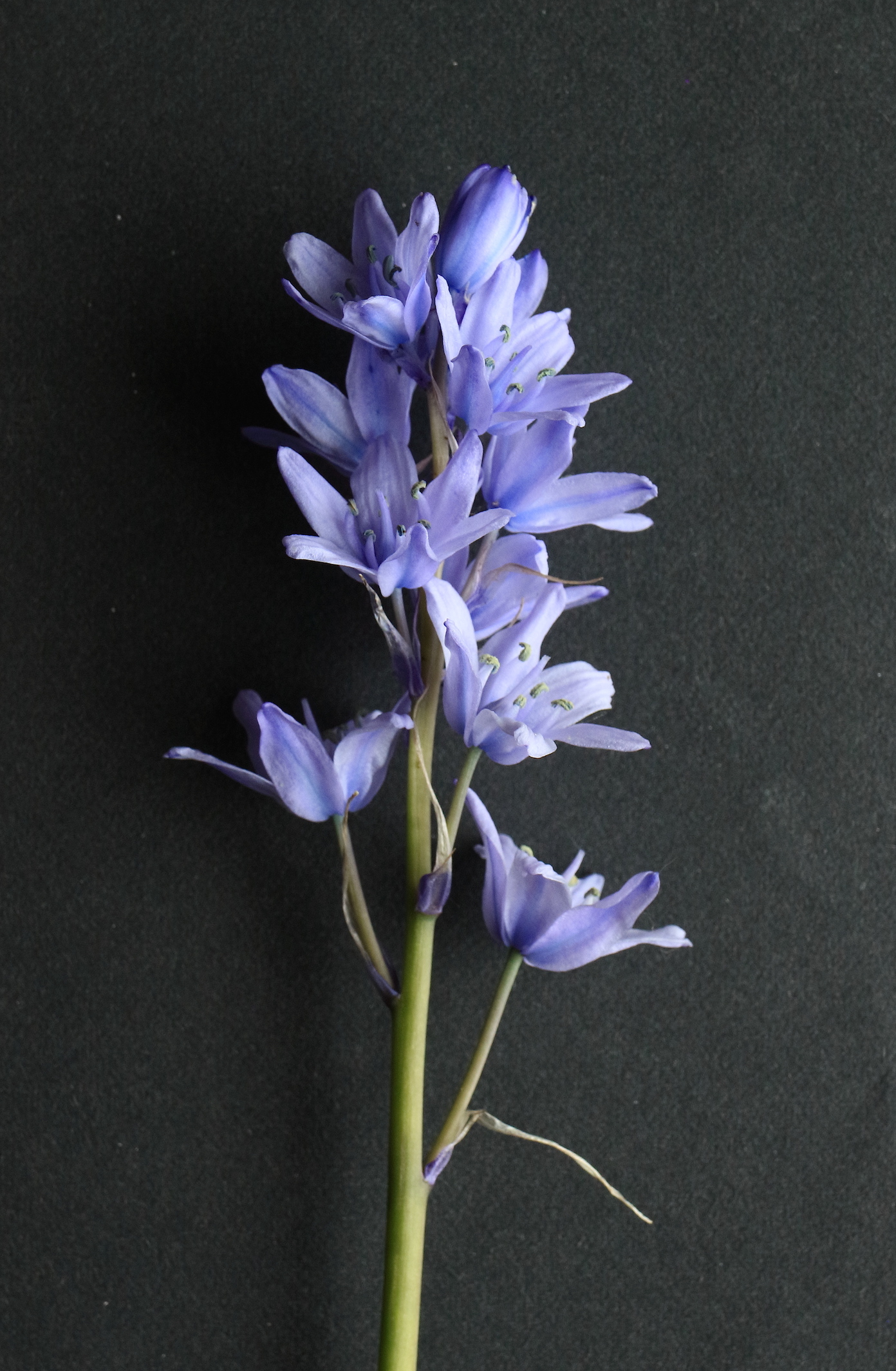
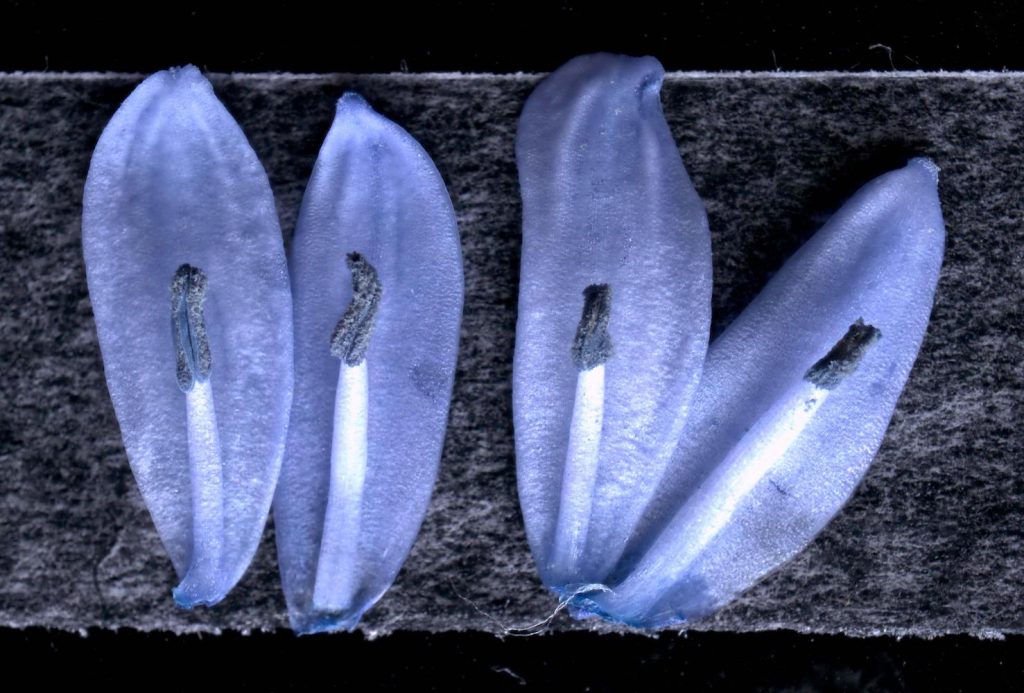
In summary, in plants closer to Spanish Bluebell,
- the stem remains erect
- flowers arise around stem
- the flower-stalks curve less (or even stay straight and angled upwards) so mature flowers droop only slightly or may be angled upward
- the flowers are bell-shaped from an early stage, and ‘gape’ widely at maturity
- the tepal-tips may become gently curved outward, or often remain quite flat
- anthers are steel-blue, as is pollen, but later both may look paler and greenish in some
- leaves are wide (Plant Crib = 10–35mm)
The following are of two different forms which appear close to Spanish Bluebell, and are briefly discussed below.
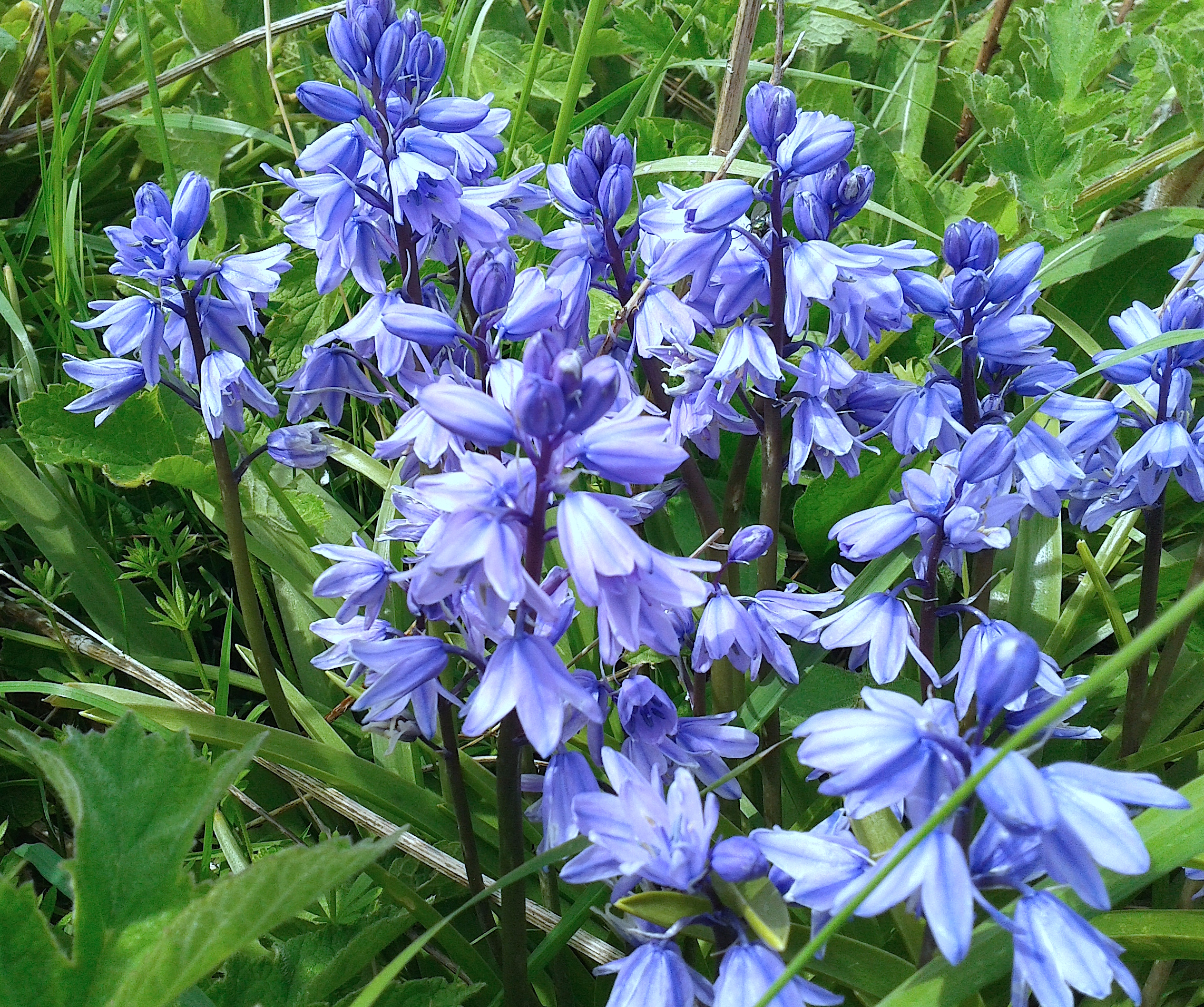
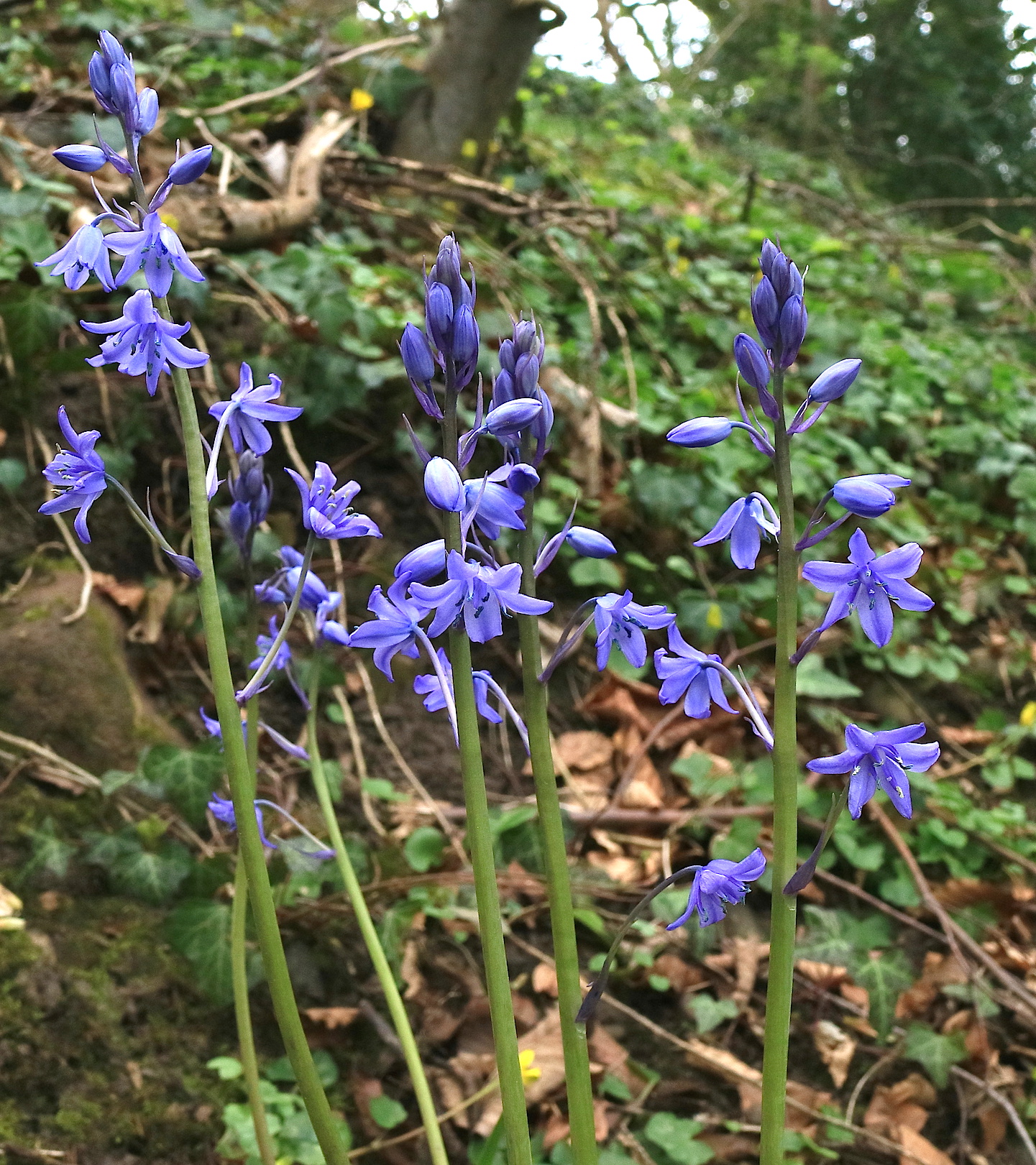
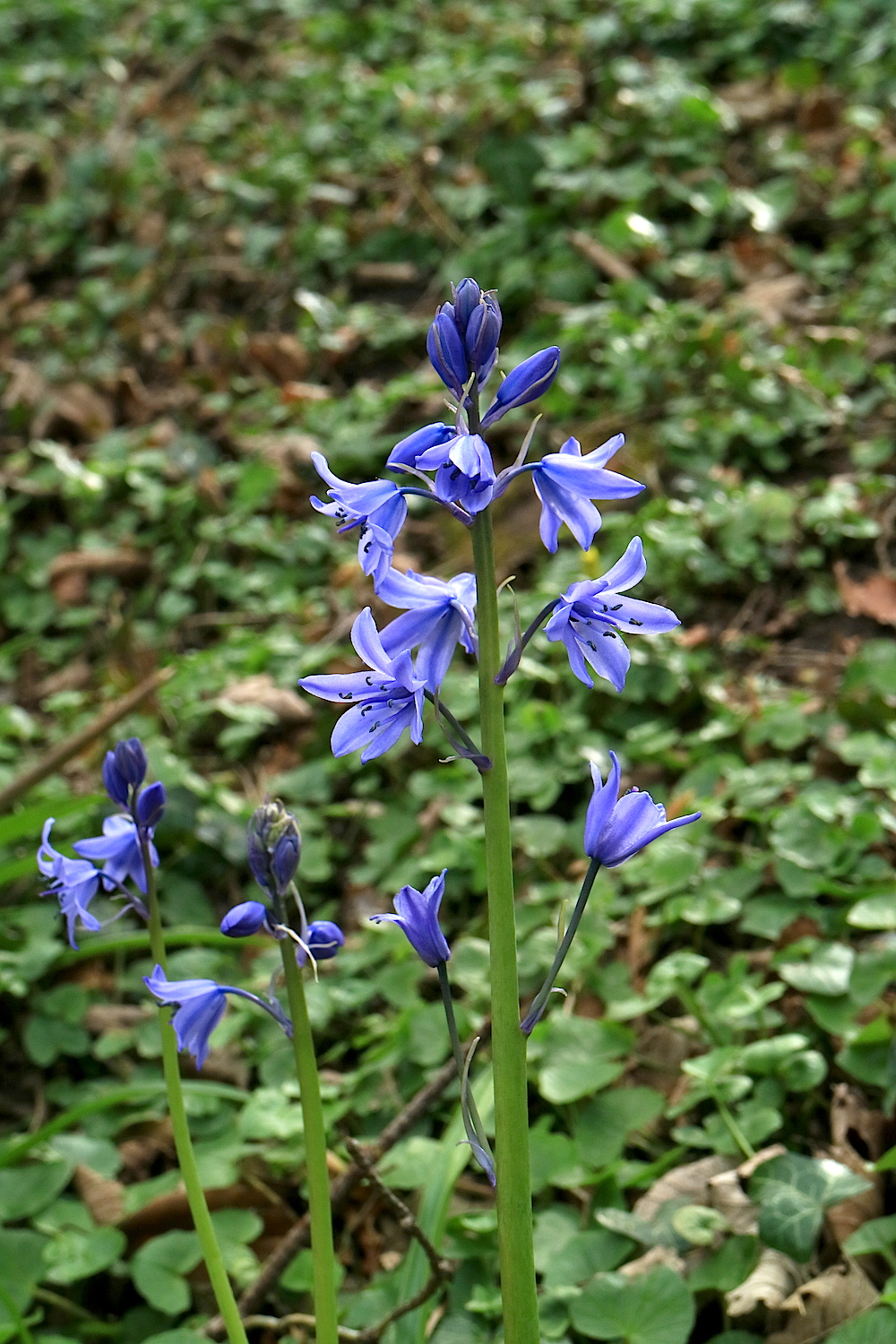
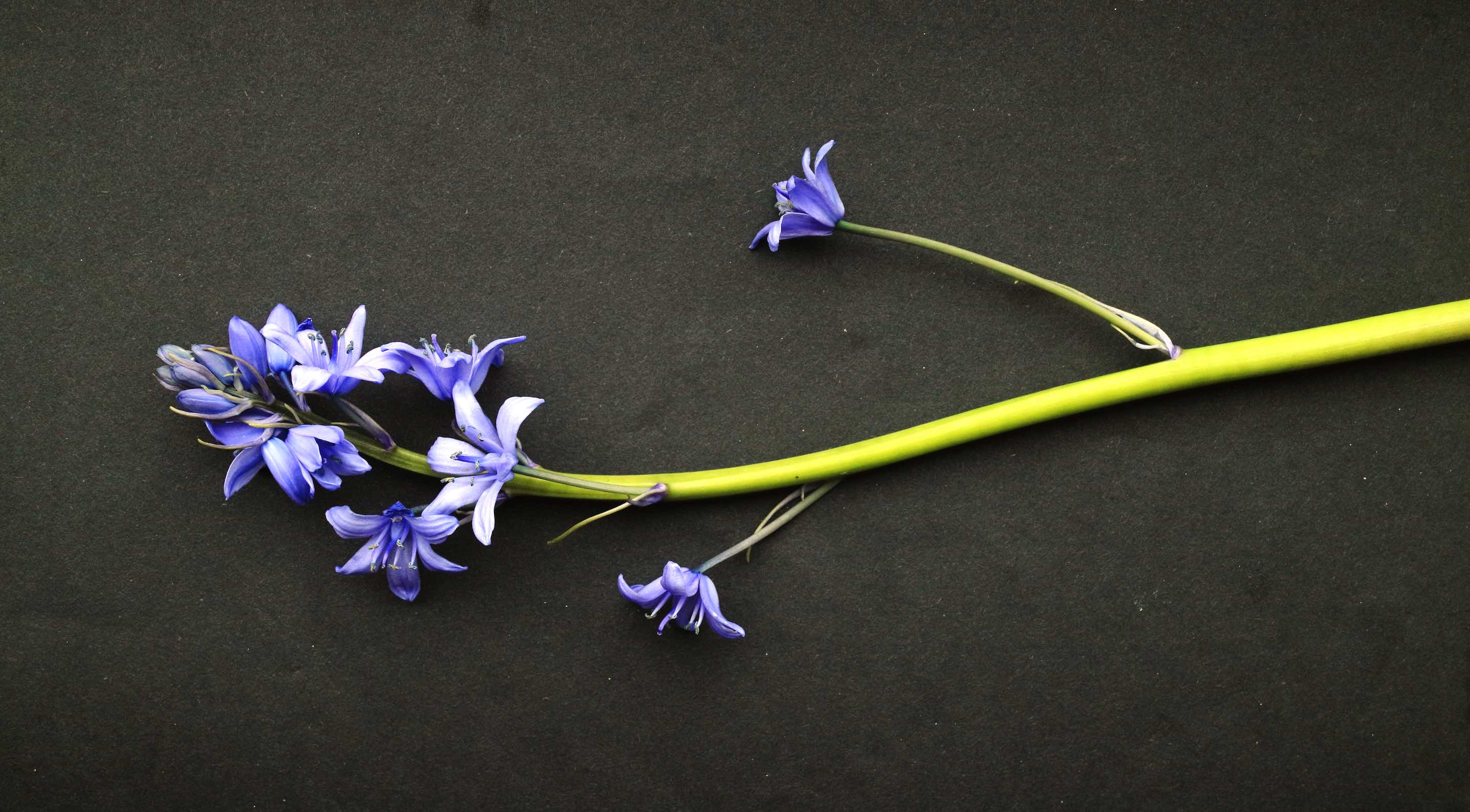
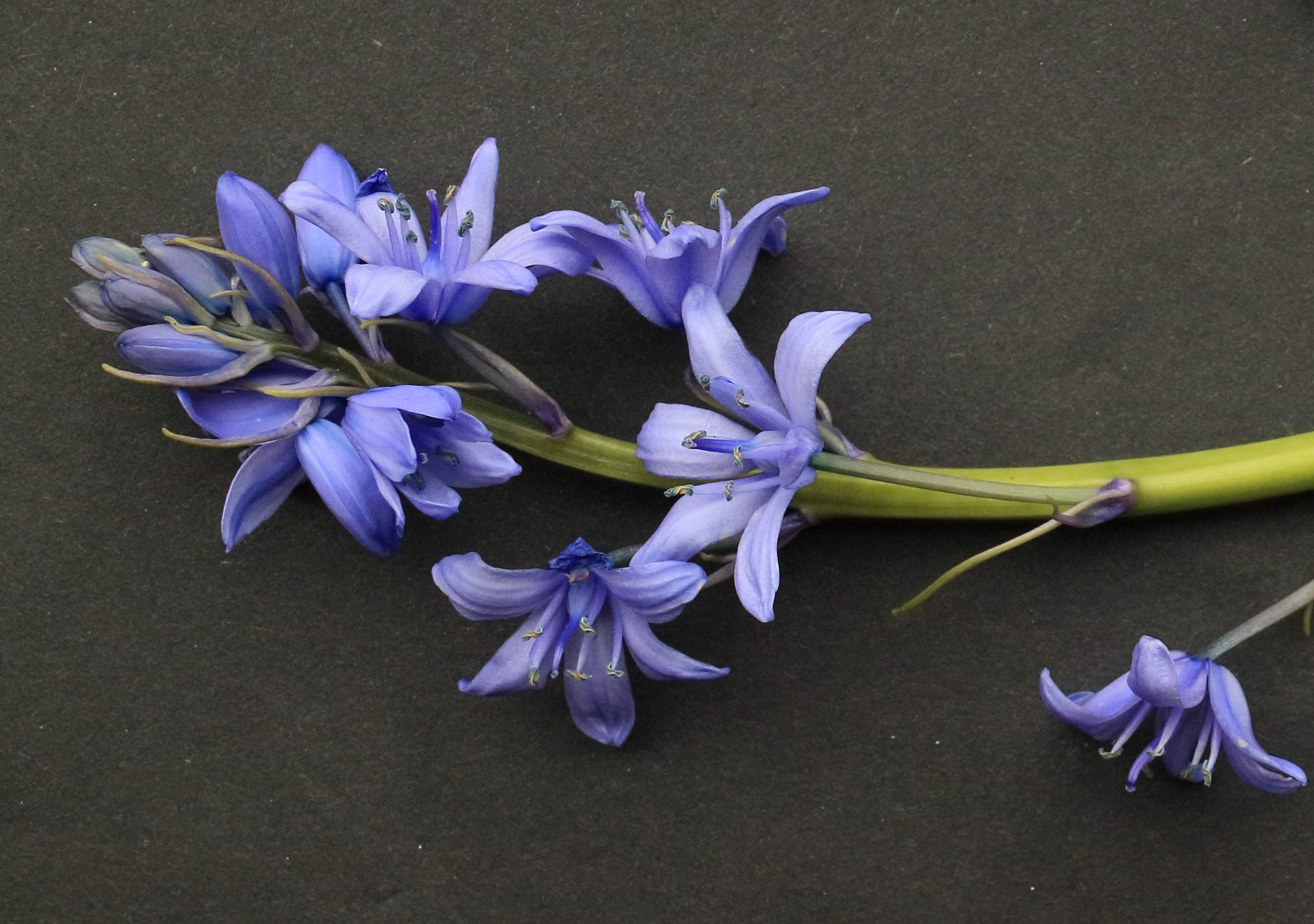
Geoff Lines’ photo above seems to me to be close to Spanish Bluebell. Note how even in the older flowers, low down in the inflorescences, the tepals are only slightly recurved, and in many flowers remain +/- flat, and even slightly incurved in some. In the middle of the inflorescences, the flowers at maturity gape open into wide bell shapes. In typical hybrid intermediates, the petals are more strongly recurved. The flowers are somewhat paler than typical native bluebells, and the young anthers are deep blue (already becoming paler in older flowers as pollen is lost). The flowers are disposed around the stem, much as in Hyacinth, not one-sided, and when mature are only slightly drooping.
In the other photos, from Wetheral, the inflorescence is much more open, the flowers gape convincingly, although the tepals become rather more recurved with age. The filaments in the outer tepals were inserted well below the middle of the segment (as in the following photo).
Position of emergence of filaments (outer tepals)

This shows the position of the filament emergence in outer tepals from the plants from Wetheral shown in the photos above. Whilst the position in the hybrid is close to the middle of that tepal, the native Bluebell is above the middle and ‘Spanish-type’ is below. (Note that this character only applies in the three outer tepals; the filaments arise much lower in the inner three!)
Discussion
Although pure forms of the two species may be readily separable from each other on a number of characters, there is a major stumbling-block here for the incautious! If through backcrossing a “complete spectrum” exists, then no dividing-lines exist to separate hybrid plants from the species at either end of the spectrum! Does one then apply strict terms of reference, so that you only admit plants into one or other species if they agree in every respect with the definition, and regard all others as hybrids? Or do you take a somewhat laxer of view? – in which plants with the general appearance of the species, albeit with one or two characters at variance, or at least ambiguous, are “allowed in”. This approach at least covers the (very common) situation in nature where species are somewhat variable. But then you overlook signs of ‘contamination’.
While it is true to say that this will be a matter of opinion, opinion is more valuable if backed by a great deal of experience… so get out there and get experience! There is no easy answer here, but suffice it to say that the longer one has been botanizing, the greater the tendency to treat one’s own determinations with cautious scepticism!
So please see if you can make sense of your local populations:
- Submit records of the hybrid – just one localised/dated record per 1 × 1 km square would suffice, but be as thorough as you like!
- Do you have uniform populations of clearly hybrid plants? or
- Do you have hybrid swarms – variable plants with a range of characters between the species?
- In the ‘bluebell woods’ can you see signs of ‘contamination’? – or are you seeing mere natural variation in aboriginal sites?
- Can you find any ‘Spanish-types’?
- Take photos!
JR 19 April 2021
⇠ back to “Look out for…”
Thanks for sharing this – very informative.
Thanks! – very pleased it’s been useful.
Really helpful and clear even though I can/do usually get them right.
Thanks, Dawn!
I reckon that the true Spanish bluebell does occur very rarely in the “wild”, though quite possibly not in Cumbria. I’ve seen it in Stafford (the Staffordshire and Cheshire recorders agreed).
https://www.ispotnature.org/communities/uk-and-ireland/view/observation/715856/spanish-bluebell-wild-type
I also saw it at another location in Stafford at about the same time. This year I’ve seen a couple of possible other sites, one in south Cheshire, and the other in the Potteries, but I’m less certain of these.
I also record a 4th taxa – the garden bluebell, Hyacinthoides hispanica hort., which is what is sold as Spanish bluebell, and which no-one seems to know what it is. (I suspect it’s a triploid hybrid.) These are the robust plants with very broad leaves. I think it crosses with the hybrids, and presumably also the natives, but I could be misled by younger plants of this taxon being less robust.
Thanks, Stewart – your remarks much appreciated! Your iSpot photos look very much like the garden plant that I illustrate on the webpage – [that was present when we moved here 40 years ago]. I haven’t seen plants quite as ‘good’ as those – or your pics – actually in the wild in Cumbria. I have however seen that plants like this (also illustrated on the webpage) are often at one extreme of the variation within larger colonies of what are obvious H. x massartiana – perhaps segregates from generations of ontrogressions from an escaped real hispanica by constant cross-fertilisation with surrounding natives. I note that ‘Plant Atlas 2020’ suggests that ‘real’ H. hispanica ‘rarely escapes’ (hedging bets that it might be ‘around’ in the wild) but that the next generations from those are likely to be hybrid from the abundance of pollen transferred from the native plant. I don’t think I have seen (or I might be overlooking) that broadleaved triploid which is also mentioned in Plant Atlas – as of ‘complex origin’. I also note Peter’s useful comments below about hispanica in Spain. Jeremy.